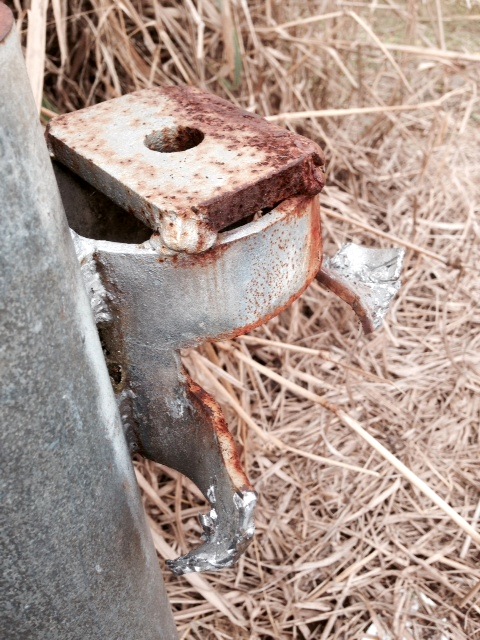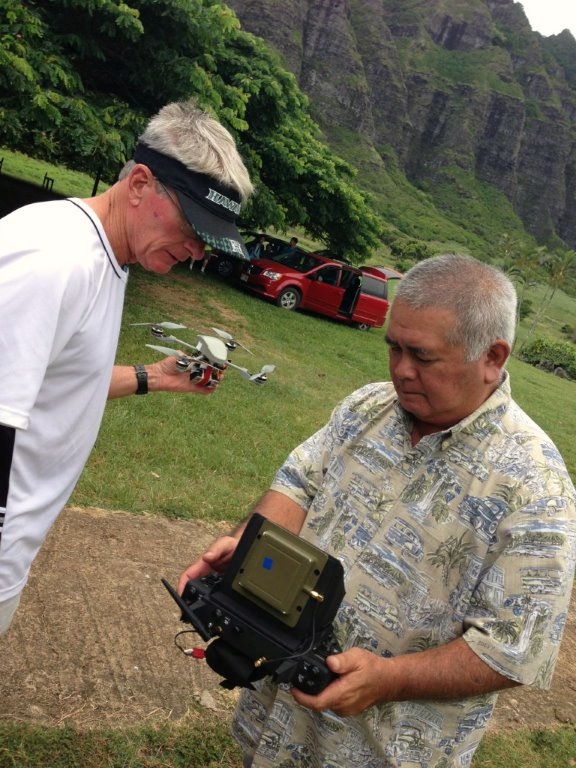The Big Island PUC will be holding Public Listening Sessions re: the proposed NextEra/HEI merger at Hilo High School on September 29th at 6 p.m., and Kealakehe High School on September 30th at 6:00 p.m. PLEASE ATTEND to say you support the Hawaii Island Energy Cooperative. It matters!
Category Archives: Uncategorized
Where’s The Plan?
My letter to the editor titled Stay Home ran in today’s Hawaii Tribune-Herald.
Stay Home
Regarding the Thirty Meter Telescope: Now, outsiders are coming to the Big Island to run our lives. Since when is that pono? Stay home. We don’t want you here.
The outsiders want to stop the TMT. Listen: We have the state’s lowest median family income. We have drug problems, spousal abuse problems, teenage pregnancies and the social ills that follow from that. The TMT is the only entity actually putting its money — a lot of it — where its mouth is.
They are offering education, the great equalizer. We of the older generation, fortunate enough to have our educations, are lucky. No one can take that away from us. But what about the youngsters coming up? Who will help them?
Usually, the present generation tries to help the next generation do just a little bit better. But on the Big Island right now, it’s just the opposite. And it’s being influenced by folks with fame and money who don’t even live here.
I am a Hawaiian. I respect my culture and its religion and traditions. I also respect its future. The Facebook generation tends to think in terms of today and tomorrow, but we Hawaiians used to think in terms of seven generations.
In 140 years, there won’t be telescopes on the mountain at all. We need to think about this carefully and not just react. How will we save ourselves on the Big Island?
It concerns me that the TMT protestors are reacting, rather than planning. It’s short term and emotional decision-making. Where is their 10-year plan for getting where we need to be? There’s no plan at all.
The Thirty Meter Telescope people spent almost seven years interacting with the community about its concerns and developing a careful plan – now approved – that put lots of money, education, and jobs into our island’s economy. It was unprecedented. I know this because I attended almost every TMT meeting for seven years.
The people protesting now weren’t at those meetings. Most were only in middle school when the process began so they have no idea what went on and how much was accomplished. It was phenomenal, and set the bar for the level of engagement we can expect from a corporation coming onto the Big Island.
Tossing out the TMT people now would be an enormous mistake and send the worst possible message we could ever send to any other company that ever wants to do business in Hawai‘i.
I actually have great optimism about today’s young people. I see it in their faces when I work with them in the many issues I’m involved with – they are smart and passionate and engaged.
What we need now is for the ones who can see the big picture to step forward and lead. There are huge changes going on in the world right now, and some young people don’t understand this yet. Some older people don’t even fully realize it yet.
But everything you hear me talking about is to try to position our island and our next generations: So our electricity will be affordable. So our food will be affordable. So education will improve. So people will be able to find jobs. So our crime rate will not continue to soar. So our children and grandchildren won’t have to move to the mainland because they cannot afford to live here.
My message is always about having a plan for where our island and its people need to be in five, ten, fifteen years. The long-term plan needs to be about all of us, not just a few of us. The Thirty Meter Telescope will, in quite a few different ways, help us move toward that plan.
We need young people to lead us there, too.
Farming in the Wild West?
Richard Ha writes:
The Hamakua Coast is becoming the Wild Wild West.
A stop sign on Highway 19 is shot full of holes.
Someone cut through our iron gate with a torch just recently.
They left a flashlight (by accident?)
We're installing camouflaged infrared monitors at different places on the farm.
Our neighbors at the quarry had fuel stolen and their surveillance camera stolen.
Many farmers are reporting product and equipment stolen.
It's not easy being a farmer.
I Welcome Your Thoughts
Richard Ha writes:
I have been appointed to a national, 25-person Fruit and Vegetable Industry Advisory Committee. It’s the revival of an old committee.
I’ve been asked for two or three topics of interest; let me know if you have any thoughts. We’re being asked to present ideas ahead of time so they can prepare for any necessary speakers in advance of our first meeting at the end of September. I welcome your thoughts.
Federal Food Labeling Act is About Clarity & Common Sense
Richard Ha writes:
The "Safe and Accurate Food Labeling Act" recently introduced in the House of Representatives is an attempt to provide clarity.
Farmers don't have a problem with labeling. We just need for regulations to be uniform, so that everyone is playing by the same rules. This is just plain common sense.
From The Packer:
UPDATED: Federal GMO labeling bill draws ag support
04/09/2014 03:30:00 PM Tom Karst
(UPDATED COVERAGE, April 10) Drawing support from major agricultural groups but pointed opposition from environmental groups, legislation that would prevent states from enacting mandatory labeling of genetically modified food has been introduced in the House of Representatives.
Reps. Mike Pompeo, R-Kan., and G.K. Butterfield, D-N.C., introduced H.R. 4432, called The Safe and Accurate Food Labeling Act on April 9.
“This legislation is vital to giving America’s farmers certainty about what the rules of the game will be when it comes to labeling foods containing GMOs, an issue that cries out for a national solution,” Chuck Conner, president and CEO of the National Council of Farmer Cooperatives, said in a news release.
“A 50-state patchwork of different labeling laws and regulations would not only burden farmers and food producers but would cause significant confusion among consumers at grocery stores across the country.
Also in that article, Chuck Conner points out that GMO crops will be important to meet future world food needs, and why this bill is significant.
“This bill represents an important step in cutting through the misinformation about GMOs and instead focuses on the science attesting to their safety and the benefits these crops provide,” Conner said in the release.
Bob Stallman, president of the American Farm Bureau Federation, Washington, D.C., also strongly supports the legislation.
“With the introduction of this legislation and the leadership of the bill’s sponsors, Farm Bureau looks forward to a national-level discussion that will affirm FDA’s role in assuring consumers about GMO safety and reduce the confusion that would result from a patchwork of state labeling initiatives,” Stallman said in a statement.
Not a Tomato, But a Caret
Richard Ha writes:
I am in Washington D.C. right now.
Dean Gallo, of the University of Hawai‘i’s College of Tropical Agriculture & Human Resources (CTAHR), asked me if I would be the Council for Agricultural Research, Extension, and Teaching (CARET) delegate representing Hawai‘i.
The Council for Agricultural Research, Extension, and Teaching (CARET) is a national grassroots organization created in 1982 by APLU’s Division of Agriculture. CARET is composed of representatives from the 50 states, the U.S. territories, and the District of Columbia. CARET’s mission is to advocate for greater national support and understanding of the land-grant university system’s food and agricultural research, extension, and teaching programs that enhance the quality of life for all people. CARET also works with national agricultural organizations to tell agriculture’s “story.”
This brochure is an interesting look at CARET, who its delegates are and how it works.
I’m a big supporter of CTAHR and also Dean Gallo. They do excellent work, and I could not be more pleased to support a cause I truly believe in.
Out here in the middle of the ocean, as we are, we really need to support those who support all of us.
KITV: Hamakua Springs Volunteers Acres For Testing
Richard Ha writes:
Did you catch the KITV news last night? Here’s a link to our story Hamakua Springs Volunteering Hundreds of Acres For Testing.
Take a look at this photo. I was receiving instructions on how to fly the small chopper in Ted Ralston’s hand.
I actually launched it, flew it around and spotted a banana clump, which we were able to look at. We saw how different heights affected the screen resolution.
It was very easy to operate, and at a cost of $1500 to $2000, it’s very affordable compared to a real chopper at $500,000. With one of these, we could check around our three streams for invasive species and plan our strategy. We could make a long-term plan for our property based on terrain, soil fertility, etc.
We would coordinate with our neighbors, too, and offer to help them with aerial photos and such. It’s very interesting.
USDA Says This Year’s Corn Crop Not As Bad As Feared
Richard Ha writes:
From www.cnbc.com:
Why Some Tomatoes Taste Bad, & Why Ours Don’t
Richard Ha writes:
Published: June 29, 2012
WASHINGTON, June 29 (UPI) — The reason bright, uniformly red tomatoes in supermarkets lack the flavor to match their intense color is genetics, U.S. plant researchers say.
A gene mutation that makes a tomato uniformly red, favored by farmers as it produces a visually attractive product, stifles genes that would contribute to its taste, scientists said.
The chance mutation discovered by tomato breeders has been deliberately bred into almost all tomatoes for the color it provides.
Researchers writing in the journal Science report the gene that was inactivated by that mutation — resulting in a brighter uniform color — plays an important role in producing the sugar and aromas that are central to a flavorful tomato. Read the rest
And here’s another interesting article on the same subject from NPR:
June 28, 2012
by DAN CHARLES
Notice how some of these tomatoes have unripe-looking tops? Those “green shoulders” are actually the keys to flavor.
The tomato is the vegetable (or fruit, if you must) that we love to hate. We know how good it can be and how bad it usually is. And everybody just wants to know: How did it get that way?
Today, scientists revealed a small but intriguing chapter in that story: a genetic mutation that seemed like a real improvement in the tomato’s quality, but which actually undermined its taste. Read the rest
We are great fans of heirloom tomatoes. They taste great. I like them simply sliced and chilled with sea salt – sometimes with mozzarella cheese.
Merrie Monarch: Intense!
I mentioned last time that my daughter, 8, is dancing in the Merrie Monarch hula festival this year for the first time, and so this is our first experience with what goes into preparations for the big hula event.
The number of practices with her hālau has stepped up a lot. During these last two weeks before their performance, they’ve gone from meeting twice a week, as they do during the year, to practicing most weekdays from two to four hours a day.
As a parent, let me just say WOW. That’s on top of school and homework (finding time for her to do homework is taking a lot of parental ingenuity) and trying to make sure she gets enough sleep at night.
But it’s only for a very short time, and as I watch these kids practice on that stage at the Edith Kanaka‘ole Stadium I think about how very much it’s worth it.
I marvel at how much they are learning. It is huge, and great, how much they are learning about the Hawaiian culture – stories, chant, hula, history, ways of being, ways of learning, respect, continuity, integrity, community, cooperation and more.
And they are also learning how to come together and be a part of the total hālau by dancing with the adults, whom they don’t usually dance with the rest of the year. They are learning confidence, and how to perform in front of 5000 people. They are learning to take direction.
They are learning how to work hard at something that’s important to them. Is there any greater lesson?
These kids are working hard but there are so many smiles at rehearsal. My daughter is loving it. She keeps telling me she likes practicing every day, because she feels herself getting better each day in a way that’s different from when they meet twice a week.
What I love is seeing her take part in something that’s so much bigger than herself, than our usual world, and enjoying it and fitting herself into it so well. What more rewarding thing is there for a parent to see than their young child successfully taking on a big challenge?
A reporter and videographer from Honolulu were at the stadium and taped part of their rehearsal for the television news last night. It’s starting!
Stay tuned and I’ll report back again.




